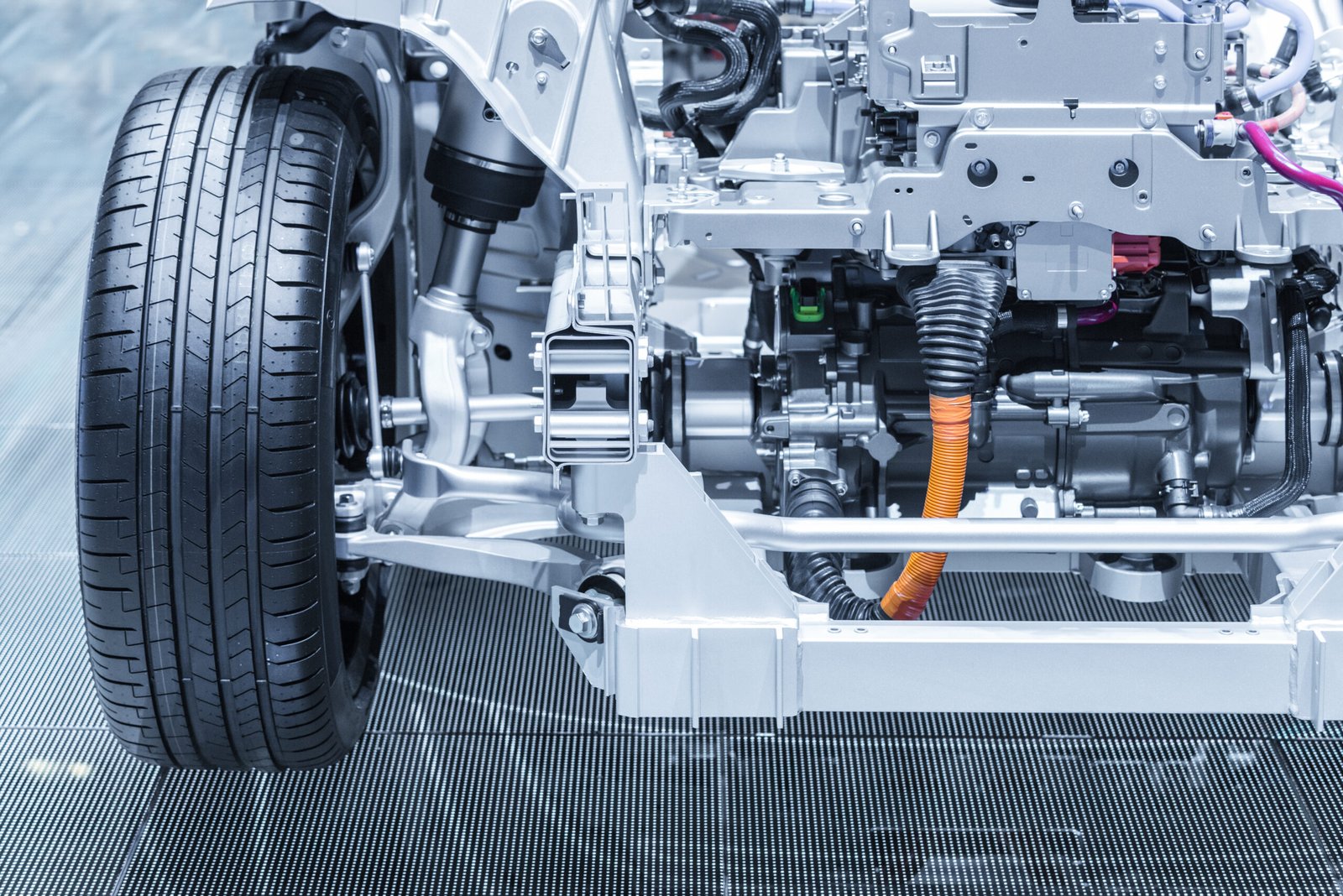The electric vehicle (EV) market has been rapidly evolving over the past decade, driven by the dual imperatives of reducing greenhouse gas emissions and decreasing reliance on fossil fuels. With global EV sales reaching over 10 million units in 2023, the momentum toward electric mobility is undeniable. Yet, despite this growth, significant challenges remain in supporting the widespread adoption of EVs, particularly in terms of charging infrastructure and technological advancements necessary for different sectors, including passenger vehicles, public transport, and heavy-duty freight. One of the most promising developments in this field is the advent of megawatt charging systems (MCS), designed to power heavy-duty electric lorries buses, light aircraft and boats efficiently. This article will delve into the current state of the EV market, explore the innovations in megawatt charging technology, and discuss their transformative potential for the transport sector and battery energy storage sector.

The current state of the EV sector.
The global EV market is characterised by exponential growth but remains fragmented in terms of technological adoption and infrastructure readiness. Countries such as Norway, China, and the Netherlands lead in EV adoption rates, thanks to favourable government policies, incentives, and robust charging infrastructure networks. However, the scenario is different in countries where infrastructure is still catching up with demand, leading to range anxiety, and charge point trauma (1), among potential buyers.
Charging infrastructure has traditionally been a significant barrier to EV adoption. While home and public Level 2 chargers (typically around 7-22 kW) are sufficient for passenger vehicles, the heavy-duty transport sector presents a more complex challenge. Fleets of trucks and buses need to be charged quickly and efficiently, without disrupting operations. This is where the megawatt charger comes into play, promising to be a game-changer for long-haul electric trucks and buses.
The Need for Megawatt Chargers
Heavy-duty vehicles, such as cargo lorries and buses, require significantly more energy than passenger vehicles. A fully loaded electric lorry can consume several hundred kilowatt-hours (kWh) of electricity to travel 500 miles, making conventional charging methods impractical due to extended downtime. Existing fast chargers, typically rated up to 350 kW, would take several hours to fully charge such vehicles, which is far from ideal for logistics companies that operate on tight schedules.
Megawatt charging Systems (MCS), with power ratings exceeding 1 MW, address this gap. Designed to deliver massive amounts of power safely and efficiently, MCS can reduce charging times for heavy-duty electric vehicles to under an hour, facilitating faster turnaround and improved operational efficiency. For instance, a 1.5 MW charger could provide a 200kWh battery with a 0-80% charge in less than 20 minutes. This is a transformative leap for industries like freight, mining, aircraft, shipping, and construction, where minimising downtime is critical.

In a significant development for the future of road freight, the new Megawatt Charging System (MCS) standard is set to dramatically enhance efficiency compared to hydrogen-based solutions. This shift is gaining momentum, as 2023 has seen two pivotal studies challenging the viability of hydrogen in the sector. The latest research suggests that battery-electric vehicles are increasingly likely to become the preferred choice over fuel cell systems for powering heavy-duty trucks.
Technical Aspects of Megawatt Charging Systems
The development of megawatt chargers involves a series of technical challenges, particularly concerning thermal management, connector design, safety protocols, and grid impact.
1. Thermal Management: Charging at megawatt levels generates significant heat. Advanced cooling systems, both liquid and vapor-phase, are essential to prevent overheating of cables and connectors. Ensuring that the heat generated is managed efficiently without compromising the safety of the system is a critical aspect of megawatt charger design.
2. Connector Design: Traditional connectors used for fast chargers are not suitable for megawatt-level power transfer due to limitations in size, weight, and safety. The connectors for MCS need to be robust and designed to handle high currents while minimising resistive losses. This involves using advanced materials and innovative connector designs that can maintain optimal performance over prolonged periods of use.
3. Safety Protocols: High-power charging introduces significant safety risks, including electrical hazards and fire risks. Therefore, MCS development includes comprehensive safety features, such as automated shutdown mechanisms, real-time monitoring systems, and reinforced insulation. The goal is to ensure that both the vehicle and the charging station remain safe during high-power transfers.
4. Grid Impact and Energy Management: The grid impact of megawatt chargers is another critical consideration. Drawing such a high level of power can strain local grids, especially during peak hours. To address these grid constraints, battery energy storage systems (BESS) and containerised BESS can play a pivotal role. These solutions can supplement power delivery during peak times, mitigating the strain on the grid by providing stored energy. The containerised units are charged using renewable sources such as daytime solar, and low-rate off-peak electricity during the night, allowing for an optimised energy flow. This capability not only ensures the reliability of megawatt charging systems but also promotes sustainable energy usage by balancing grid supply and demand effectively.
Emerging Technologies Supporting the EV Ecosystem
While megawatt chargers are a pivotal innovation for the heavy-duty segment, several other emerging technologies are equally critical to the evolution of the EV ecosystem:
1. Bidirectional Charging and Vehicle-to-Grid (V2G) Technology: Bidirectional charging allows EVs not only to draw power from the grid but also to supply it back. This can be particularly beneficial for grid stability and energy management, allowing electric trucks to serve as mobile energy storage units that can release energy back into the grid during peak demand times.
2. Solid-State Batteries: The development of solid-state batteries offers the promise of higher energy densities, faster charging times, and improved safety compared to conventional lithium-ion batteries. For heavy-duty vehicles, solid-state technology could significantly extend range and reduce charging time, making electric freight more viable.
3. Wireless Charging for Fleets: Although still in the experimental phase, wireless charging could provide an additional level of convenience for EV fleets. Inductive charging pads embedded in car parks or freight depots could allow vehicles to charge without plugging in, reducing wear and tear on connectors and further simplifying operations.
4. Digital Twins and Predictive Maintenance: The integration of digital twin technology, which creates a digital replica of physical assets, can help in predictive maintenance and operational efficiency of charging stations and vehicles. This ensures higher uptime and reliability, crucial for fleet operators.
Impact on the Transport Sector
The introduction of megawatt chargers will be a defining moment for the transport sector, particularly for long-haul trucking and public transport fleets. By reducing charging times to manageable levels and ensuring compatibility with existing and upcoming vehicle models, megawatt chargers can facilitate the electrification of freight, aircraft, and shipping, which has long been considered a challenging sector to decarbonise.
However, the deployment of such chargers also requires collaboration between various stakeholders, including governments, grid operators, charging station providers, and vehicle manufacturers. Standardisation of connectors and protocols will be essential to ensure seamless integration and interoperability across regions and markets (2).
Conclusion
The journey to electrifying the transport sector is a complex but necessary path toward a sustainable future. The advent of megawatt charging technology represents a significant leap forward, enabling the widespread adoption of electric vehicles across all segments, including those with the highest energy demands. As the industry continues to innovate and collaborate, the deployment of megawatt chargers, alongside other emerging technologies, will be instrumental in driving the future of mobility, reducing emissions, and achieving global sustainability goals.
The road ahead is challenging, but with the right technological advancements and strategic collaborations, the vision of a fully electrified transport sector is closer than ever to becoming a reality.
Dr Keith Chamberlain Chief Product Officer at Puredrive Energy, an authorised Duracell licensee
References:
(1) Scientific Publication: Evaluating the Barrier Effects of Charge Point Trauma on UK Electric Vehicle Growth. Dr Keith Chamberlain et al. 2021.
(2) Scientific Publication: Standardisation of UK Electric Vehicle Charging Protocol, Payment, and Charge Point Connection. Dr Keith Chamberlain et al. 2021










